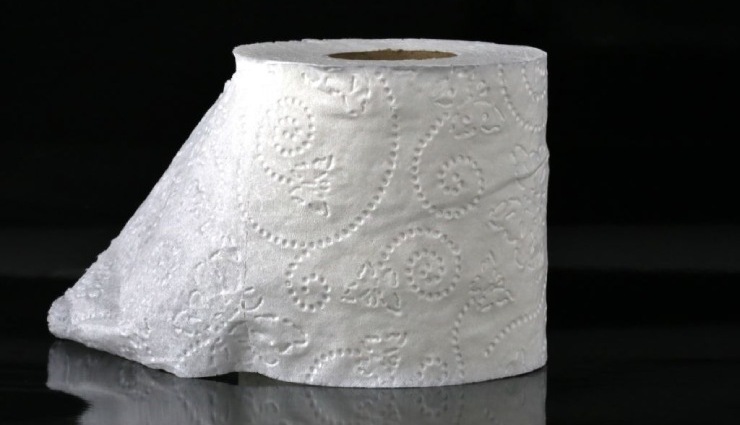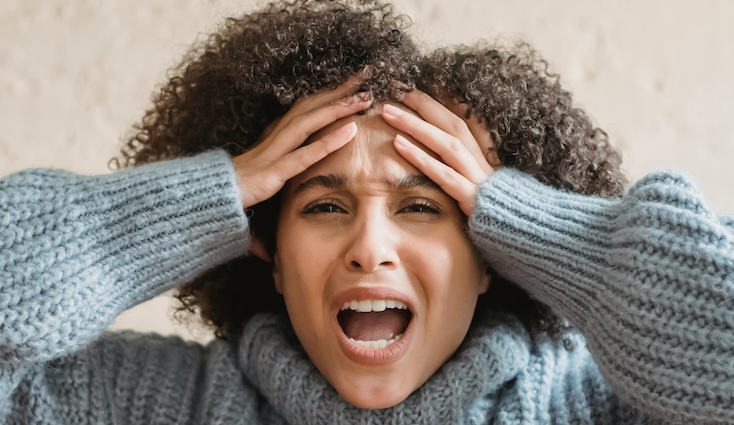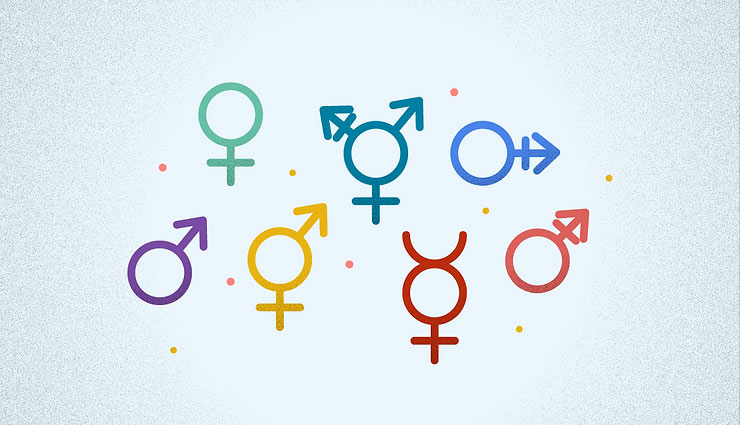The stool is the digested food that is usually brown due to dead blood cells and wastes of intestinal bacteria. So green poop may worry you a little. Various factors, such as the type of food consumed, the use of certain medications, and diseases, may change the color of stool to green, not all of which are worrisome. This article will teach you about the green chair and its causes. Stay with us until the end of the article.
The reason for green stools
The brown color of stool comes from dead blood cells and bacterial waste in the intestines. Maybe changing the color of stool to green is a sign of digestive problems, but first of all, it is better to think about the food you consumed some time ago because it usually affects the color of stool. Of course, the reason for the seat being green is not limited to these cases. In the following, we examine the factors that cause green chairs.
1. Consumable food
The most common reason for green stools is eating habits. Some foods can cause green stools, including:
- Cabbage;
- spinach ;
- broccoli ;
- avocado ;
- green apple;
- celery ;
- Beans;
- Asparagus ;
- Cucumber;
- Zucchini ;
- Kiwi;
- blueberry.
Chlorophyll in dark green vegetables is a chemical that helps the plant absorb the sun’s energy and turns green. Consuming foods containing this substance causes the stool to turn green, which is not a problem, and you can continue eating these foods. Nuts like pistachios, plants like parsley, and seeds like hemp also contain chlorophyll. Of course, consuming a small amount of these substances is not enough for green stools, and consuming a large amount, especially in smoothies, juices, soups, or salads, causes green stools.
Some foods also contain food dyes that are not processed well in the intestine. As a result, the dye enters the stool, and you may feel something is wrong, but your body needs some water. Of course, the food coloring used must not be green to make your stool green. Purple, blue, and black colors also cause green stools. For example, in 2015, the fast food chain Burger King reported that people who ordered their hamburgers with black buns had green chairs.
2. Bile pigment
Bile is made in the liver and stored in the gallbladder. The natural color of this liquid is yellowish-green. Combining bile with food causes better breakdown of food fat, and the small intestine absorbs more fat. However, your body must also break down the bitterness and expel it. Usually, this happens as it passes through the intestines. But in some conditions, such as diarrhea or other digestive problems, bile does not break down at the same speed. As a result, the stool is seen in green, the natural color of bile.
Some liver diseases, such as non-alcoholic fatty liver, also cause increased bile and watery diarrhea with a yellowish-green color.
3. Taking some medicines such as antibiotics
Antibiotics, powerful ones, can kill many normal bacteria in the gut. This reduces the population of brown intestinal bacteria. Of course, probiotics such as yogurt and kombucha help maintain the balance of intestinal flora (all bacteria).
Other medications and supplements may also break down the pigment and cause green stools, including:
- iron supplement;
- rhubarb and fiber supplements;
- supplements containing chlorophyll (such as wheatgrass, spirulina, barley grass, chlorella, and blue-green algae );
- Medicines with diarrhea complications such as metformin, sertraline, or antibiotics such as ciprofloxacin.
4. Parasites, viruses, and bacteria
All kinds of parasites, viruses, and bacteria can cause green stools. Yes, your body contains millions of bacteria that serve a vital purpose. However, foreign bacteria can cause many problems for the gut.
Bacteria such as salmonella (the most common cause of food poisoning ), giardia, and norovirus accelerate intestinal activity, which causes green stools.
5. Digestive system problems
Bile moves more quickly through the intestines if you have Crohn’s disease or other digestive problems. Crohn’s disease is an intestinal disease that causes digestive tract inflammation. Celiac disease is a type of gluten intolerance and causes digestive problems such as bloating, diarrhea, and stomach pain. If diarrhea or loose stools are caused by celiac disease, the seats are likely green.
Irritable bowel syndrome, ulcerative colitis, and excessive use of laxatives such as coffee, spicy foods, and alcohol are other factors that may cause green stools by increasing the speed of bile movement in the intestine.
6. anal fissure
A fissure is a small fissure in the lining of the anus and the result of passing hard stools. But if you have chronic diarrhea or inflammatory bowel disease, the gap may widen. So if you have fissures associated with diarrhea, you’ll notice green stools. In this condition, bright red blood can also be seen in the chair.
Diets that cause green stools

Some diets are more likely to change the color of stool to green, including:
- Colon cleansing diet: colon cleansing diet or preparation for colonoscopy by increasing intestinal motility causes the food to leave the intestine quickly and the stool to be green.
- A diet containing fruits and vegetables and fruit juice: eating many green vegetables and fruits makes the stool green. Some juices also increase chlorophyll consumption and the possibility of green chairs.
- Keto diet: A high-fat diet like the keto diet can turn stools light green. If the diet is high in fat, the body produces more bile to digest the fat. Therefore, the feces are seen in the green color of bile.
Diseases causing green stools
1. diarrhea
Some diseases that cause diarrhea also cause green stools, including:
- food poisoning;
- infection or travel diarrhea;
- Diarrhea caused by antibiotics;
- Lactose intolerance or disaccharidase deficiency;
- premenstrual syndrome ;
- the recovery period after surgery such as cesarean section ;
- Host tissue rejection disease.
2. Absorption problems
The green color of the stool may be due to improper absorption of fat, which should be addressed if necessary.
3. Chemical poisoning
One of the rare but severe cases of green stool in children and adults is poisoning with chemicals such as paraquat (a pesticide).
Green stool during pregnancy
Green stool is typical during pregnancy and is usually nothing to worry about. This problem can have different causes in different stages of pregnancy, including:
- The first trimester of pregnancy: Some pregnant people experience green stools early and even before they realize they are pregnant.
- The second trimester of pregnancy: Iron supplements or prenatal vitamins, which have more iron than other multivitamins, may cause green stools.
- The third trimester of pregnancy: green stools are more common near delivery time because food passes through the intestines faster in late pregnancy.
- After delivery: Green stools in the first week after delivery are usually due to diarrhea. Repeated consumption of coffee, artificial sweeteners, and a postpartum diet are the most common causes of postpartum diarrhea.
The cause of the baby’s green stool
The baby’s first stool (meconium) is usually green or black and usually ends after three days. In older babies, green stools may be caused by an allergy to a new food, a virus, or a bacterial infection. Talk to your pediatrician if you are concerned or have questions about your child’s stools.
milk powder
Formulated milk can turn the baby’s stool green. Dark green stools in children are usually caused by iron supplements or iron-fortified milk powder. Milk protein sensitivity, digestive enzyme deficiency, and carbohydrate malabsorption can cause green stools in children fed powdered milk.
Breastfeeding
If a breastfed baby has green stools, it’s probably something like green vegetables or foods with green or purple food coloring in the mother’s diet. Sometimes, the child or the mother is allergic to something in the food. Also, green stool in a breastfed baby can indicate receiving low-calorie and low-fat colostrum. On the other hand, green chairs can mean that the baby is not getting enough milk from each breast; It may be insufficiently salty or even a sign of excess milk consumption. A pediatrician can help find the cause of the problem.
Green stool in toddlers

According to an old belief, green stools and foul-smelling diarrhea in toddlers are usually associated with teething. But this problem can be a sign of a viral infection, and it usually happens when the child’s immature immune system grows with the child’s oral quests. In this situation, diarrhea should be treated with additional fluids to prevent dehydration. Diarrhea with high fever is alarming, and you should see a pediatrician.
Green stools in older children
Children often eat foods with a variety of food colors. These colors are used in drinks, candies, birthday cakes, and sweets. Of course, green stools in children can be caused by iron supplements, viral gastritis, or lack of digestive enzymes, such as lactose intolerance.
Is green poop dangerous?
If you have green stools, don’t worry. Although a different color of the chair can be a sign of a cancerous tumor, in the case of cancer, the stool is usually black or tarry, which indicates bleeding in the upper parts of the digestive tract. In addition, bright red blood is seen in the seat in cancer-related to the lower part of the digestive tract.
Although light-colored stools are not usually a sign of cancer, you should not ignore green stools associated with other symptoms. If you have other symptoms, such as persistent diarrhea or vomiting, that do not improve, it may be a sign of a more severe problem. So talk to your doctor.
Time to see a doctor
If you have diarrhea for more than three days, see a doctor. Long-term untreated diarrhea can lead to dehydration and malnutrition. Also, you should see a doctor if you have chronic green stools with symptoms such as stomach upset, constipation or diarrhea, fever, signs of dehydration, blood in the chair, and nausea. Your doctor can determine the cause of green stools based on your medications, diet, and other medical conditions. Treatment of green chairs in adults or children is possible by treating the cause of it.
you say
How much do you know about green poop? Have you suffered from this condition? You can write us your experience and opinion in the comments section and share this article with your friends through social networks.
Warning! This article is only for educational purposes; to use it, it is necessary to consult a doctor or specialist.



